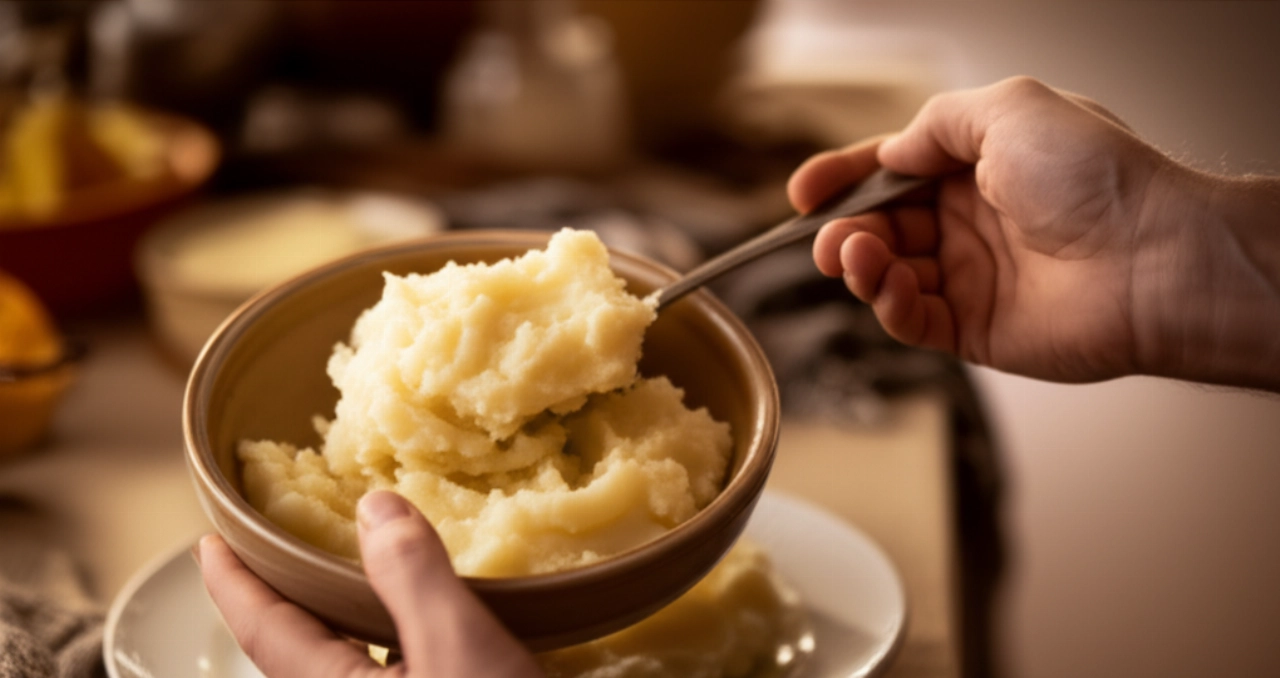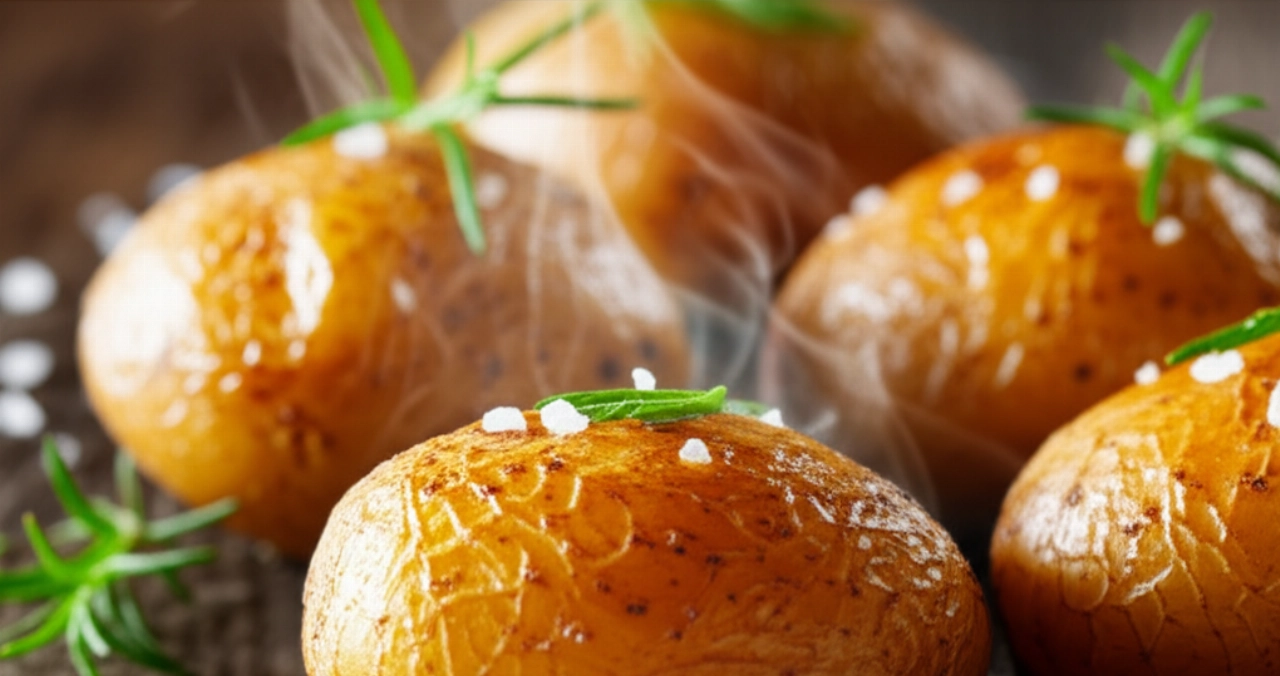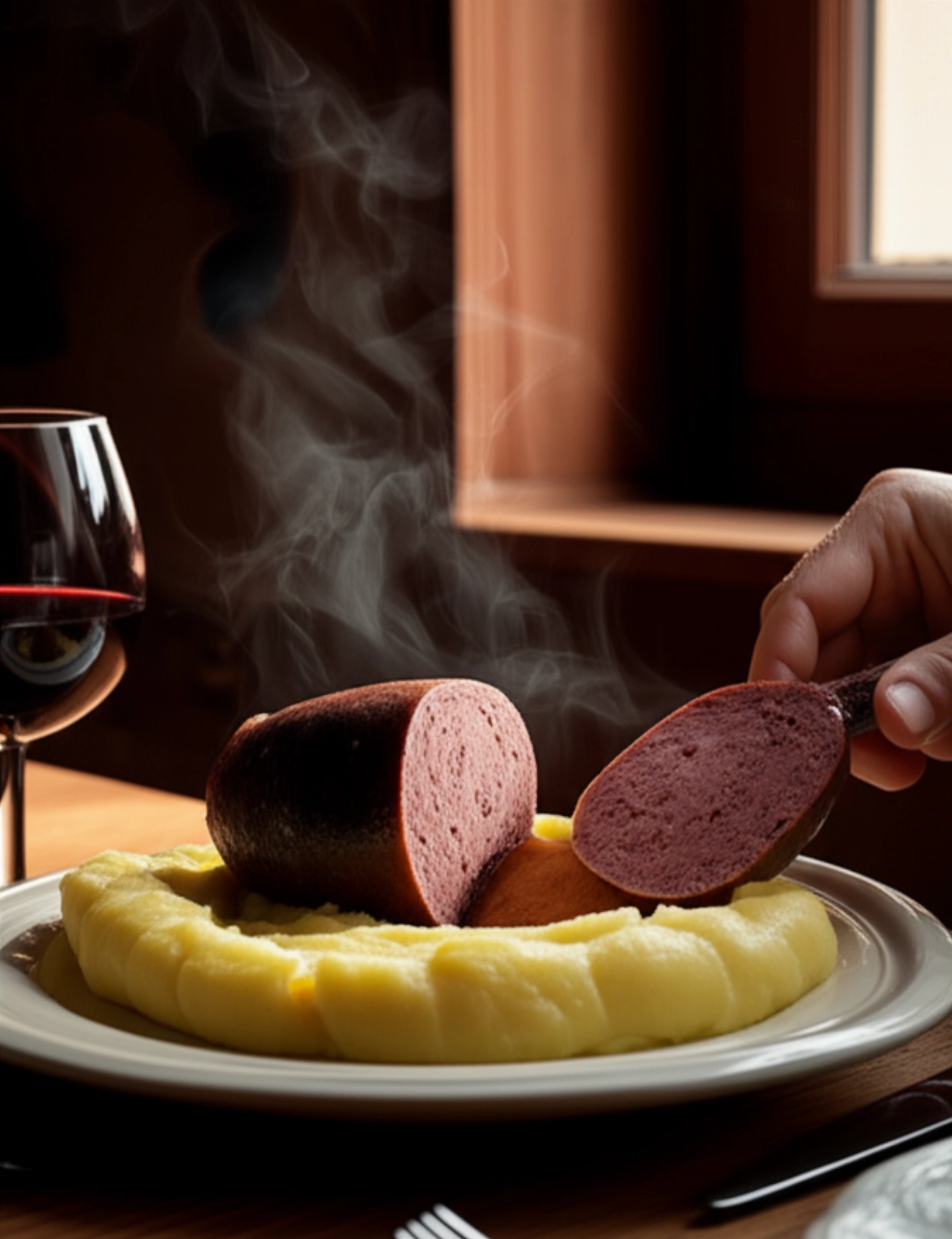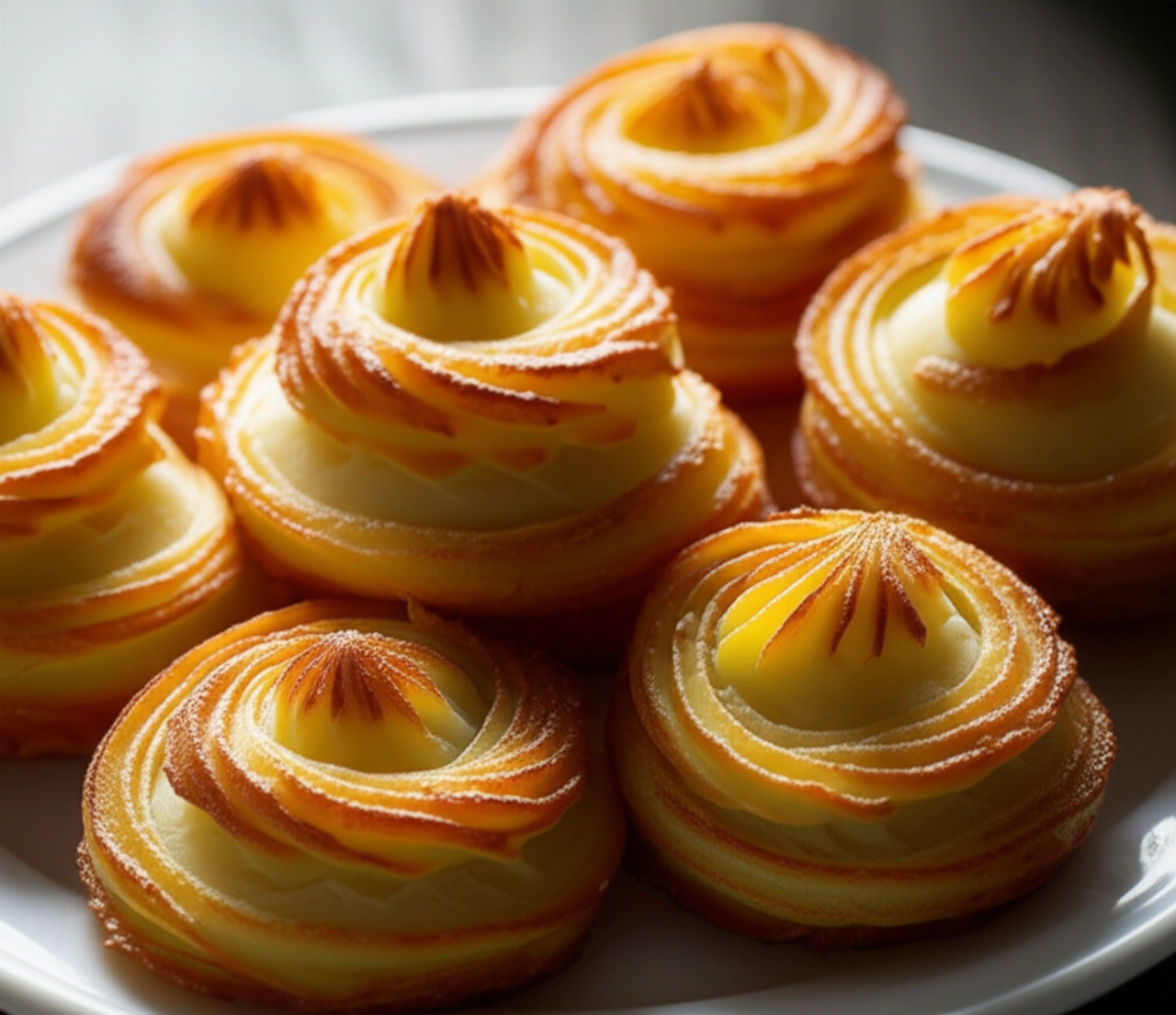There's a scent that smells of home, of a hug, of childhood. It's the scent of mashed potatoes, that soft, velvety cloud that accompanies your favorite dishes and warms the heart. A simple side dish, yes, but one that hides small secrets to transform from a mere accompaniment into a true treat for the palate.
But how many times have you tried to make it and ended up with lumpy, too liquid, or, even worse, sticky mashed potatoes? The fear of not achieving that perfect consistency, that enveloping creaminess that melts in your mouth, can discourage even the most passionate cooks. Don't worry, it's happened to everyone!
Get comfortable, because today I'm going to reveal all the secrets to preparing the ultimate mashed potatoes, the kind that will make you say 'Wow!' with every spoonful. Not just a list of ingredients, but a truly infallible guide, full of practical tips and tricks, for a guaranteed result, just like grandma used to make. Here, success is assured, and the fear of making mistakes will vanish like snow in the sun.

Ingredients for Perfect Mashed Potatoes: The Choice That Makes the Difference
For mashed potatoes that truly deserve applause, the quality and choice of ingredients are fundamental. It's not just about quantity, but about why we choose these specific ones.
- Potatoes (1 kg): This is the heart of your mashed potatoes. Choose yellow-fleshed, starchy potatoes, such as Agria, Desirée, or Monnalisa. They are low in water and rich in starch, which makes them perfect for absorbing liquids and giving that soft, non-sticky consistency we desire. Avoid new potatoes or waxy varieties, which would make the mashed potatoes gummy.
- Whole Milk (250-300 ml): Whole milk is irreplaceable for its richness and creaminess. Do not use skim milk or, worse, water! The milk should be heated well before being added, but I'll tell you more about that shortly.
- Quality Butter (50-70 g): Good butter, perhaps clarified butter or a high-quality dairy butter, makes all the difference. It's the ingredient that gives shine, flavor, and that unmistakable silkiness to your mashed potatoes. Don't skimp on quality!
- Fine Salt (to taste): Essential for enhancing the flavor of the potatoes. Add it gradually and taste.
- Nutmeg (to taste): A touch of freshly grated nutmeg is the secret to an enveloping aroma and a homey scent. Don't overdo it; it should be a whisper, not a shout!
- Parmigiano Reggiano (optional, 30-50 g): If you love a bolder flavor and even more creaminess, a little finely grated Parmigiano is a delicious addition.

The 3 Mistakes That Make Mashed Potatoes Lumpy or Sticky (and How to Avoid Them)
Here are the most common pitfalls that can ruin your mashed potatoes, and how your chef friend will help you avoid them!
- Using the Wrong Potatoes: As we've seen, yellow-fleshed, starchy potatoes are your best friends. New potatoes or waxy varieties (like red ones) contain too much water and too little starch, making the mashed potatoes watery or, worse, gummy and difficult to mash without creating lumps. Grandma's tip: If you're unsure of the type, ask your trusted greengrocer!
- Mashing Potatoes with Blenders or Immersion Blenders: This is the most serious mistake! The blades of these appliances break down the potato cells excessively, releasing too much starch and turning your mashed potatoes into an inedible glue. The secret: Always use a potato ricer (the one with holes, not a fork!) or, if you don't have one, a food mill. You'll get a velvety, lump-free consistency.
- Adding Cold Liquids: If you add cold milk or butter to hot potatoes, the temperature drops abruptly, and the potato starch 'gets scared,' making the mashed potatoes less creamy and harder to combine. The trick: Always heat the milk (and melt the butter in it) before adding it to the potatoes. This step is crucial for creaminess!

The Extra Touch: The Advice My Grandma Passed Down to Me
My grandma, with her wise hands and reassuring smile, taught me that cooking is made of small gestures that make all the difference. For mashed potatoes, her secret was twofold:
- Mash the potatoes while very hot: As soon as they're drained, still steaming, they should be immediately peeled (carefully, to avoid burning yourself!) and passed through a potato ricer. The heat helps the starch release properly and bind better with fats, ensuring superior creaminess and no lumps. Don't wait for them to cool down!
- Cream with love: After adding butter and hot milk, don't rush. Cream the mashed potatoes with a wooden spoon or a spatula, mixing vigorously but gently, from bottom to top, until they become smooth, shiny, and velvety. It's at this moment that the mashed potatoes 'breathe' and reach their perfect consistency.
Let's Prepare Mashed Potatoes Together: The Step-by-Step Guide
Now that you know all the secrets, let's get cooking! Follow these steps, and success is guaranteed.
- Prepare the Potatoes:
- Wash the potatoes well and place them in a large pot with their skins on. Cover them completely with cold water.
- Add a pinch of coarse salt to the water. This will help the potatoes absorb salt even inside.
- Bring to a boil and cook over medium-low heat for about 30-40 minutes, or until very tender. Do the fork test: it should go in and out without resistance.
- Prepare the Milk and Butter:
- While the potatoes are cooking, in a separate saucepan, heat the whole milk with the butter cut into pieces. Bring almost to a boil, until the butter is completely melted. Set aside; it should remain warm.
- Mash the Potatoes:
- Drain the potatoes and, while still very hot, peel them. You can use a clean kitchen towel to hold them without burning yourself.
- Immediately pass them through a potato ricer directly into the pot where you cooked them (if large enough) or into a large bowl. Do not use blenders!
- Perfect Creaming:
- Add a pinch of fine salt and freshly grated nutmeg to the mashed potatoes.
- Begin adding the warm milk and butter mixture, one ladleful at a time, stirring vigorously with a wooden spoon or spatula.
- Continue adding the liquid, stirring with firm but gentle movements, until the mashed potatoes have reached the desired consistency: smooth, creamy, and lump-free. You might not need all the milk, or you might need a little more, depending on the potatoes.
- If desired, incorporate the grated Parmigiano Reggiano and stir again to melt and combine.
- Taste and Serve:
- Taste the mashed potatoes and adjust salt if necessary.
- Serve your velvety mashed potatoes immediately, hot and steaming. They are perfect as a side dish for roasts, braised meats, or classic meatballs in sauce.
Tips and Frequently Asked Questions About Mashed Potatoes
Here are some of the questions I get asked most often, with answers that will help you resolve any doubts.
Which potatoes to use for perfect mashed potatoes?
As mentioned, the ideal potatoes are yellow-fleshed and starchy, rich in starch and low in water. Look for varieties like Agria, Monnalisa, Kennebec, or Bintje. These are the ones that best absorb liquids and give a soft, non-sticky consistency.
Can I prepare mashed potatoes in advance? How to reheat them?
Yes, you can prepare it in advance. Once ready, let it cool completely and store it in an airtight container in the refrigerator for 1-2 days. To reheat, place it in a saucepan over low heat, adding a splash of warm milk and a knob of butter. Stir continuously until it becomes creamy again. You can also reheat it in a double boiler.
Why did my mashed potatoes become sticky?
Mashed potatoes almost always become sticky for one reason: you used an immersion blender or a food processor with blades. The blades excessively break down the potato cells, releasing too much starch and turning the consistency into a sticky paste. Always use a potato ricer or a food mill!
Can I use water or broth instead of milk?
Technically yes, but the result won't be the same. Whole milk is essential for the creaminess, flavor, and shine of mashed potatoes. Water or broth would make them less rich and more watery. If you cannot use cow's milk, try an unsweetened plant-based milk (like soy or oat), but the flavor and consistency might vary slightly.
How can I enrich the flavor of my mashed potatoes?
Besides Parmigiano, you can add a pinch of white pepper, a tablespoon of fresh cream (for extra creaminess), or even a teaspoon of anchovy paste for a savory and unexpected touch. Some love to add finely chopped chives or fresh parsley at the end.
A Flavorful Hug That Tastes Like Home
There you have it! Now you hold not just a recipe, but all the secrets for creamy and velvety mashed potatoes that will impress every single time. A simple dish, yes, but with the right adjustments, it becomes a true masterpiece of taste and texture.
Don't be afraid to get cooking. With these tips, success is guaranteed. Let yourself be enveloped by the aroma and creaminess of this timeless dish. It's the taste of tradition, love, and home cooking that returns to warm hearts.
Have you tried our mashed potato recipe? We're curious to know how it went! Leave a comment below, tell us about your experience, or share a photo on Instagram by tagging @CercaRicette.it. And if you're looking for the perfect pairing for your mashed potatoes, don't miss our recipe for Grandma's Meatballs in Sauce or Roast Chicken with Crispy Potatoes!





